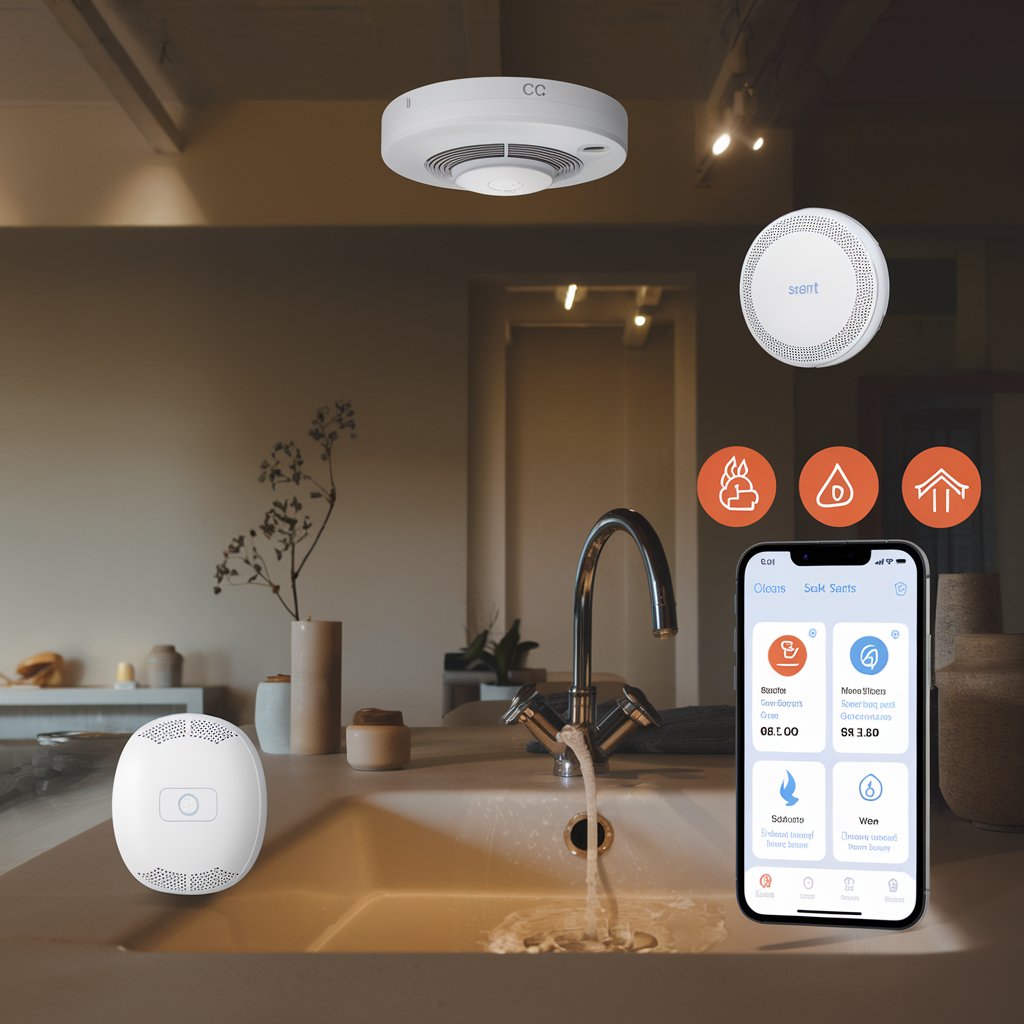Making your home safer doesn’t have to be hard. Thanks to modern technology, you can now use smart devices to watch over your house 24/7. In this guide, we’ll show you how automation can help protect your home from three big dangers: smoke, carbon monoxide (CO), and water leaks.
Contents
- 1 Why You Need Automated Detection Systems
- 2 Smart Smoke Detectors: Your First Line of Defense
- 3 Carbon Monoxide Detection: The Silent Life Saver
- 4 Water Leak Detection: Preventing Costly Damage
- 5 Setting Up Your Smart Detection System
- 6 Maintaining Your Detection System
- 7 Benefits of an Automated Detection System
- 8 Conclusion:
Why You Need Automated Detection Systems
Did you know that in 2022:
- House fires caused about $8.4 billion in damage in the US
- Around 400 Americans died from CO poisoning
- Water damage from leaks cost insurance companies $20 billion
These numbers show why having automatic detection systems is so important. Let’s look at how each type of detector works and how they can help keep your family safe.
Smart Smoke Detectors: Your First Line of Defense
How do They work?
Smart smoke detectors use two main ways to spot fires:
- Photoelectric sensors: These use light to detect smoke particles
- Ionization sensors: These react to small particles produced by fast-burning fires
Key Features of Modern Smart Smoke Detectors
| Feature | Benefit |
|---|---|
| Smartphone alerts | Get warnings even when you’re away from home |
| Voice alerts | Tells you which room has smoke |
| Battery monitoring | Sends alert when batteries are low |
| Interconnected system | All alarms sound when one detects smoke |
| Smart home integration | Works with other devices like smart lights |
Popular Smart Smoke Detector Options
| Model | Price Range | Battery Life | Smart Home Compatibility |
|---|---|---|---|
| Nest Protect | $119-129 | 5 years | Google Home, Alexa |
| Kidde Smart | $89-99 | 10 years | Alexa, Apple HomeKit |
| First Alert Smart | $69-79 | 2 years | Alexa, Google Home |
Carbon Monoxide Detection: The Silent Life Saver
Carbon monoxide is especially dangerous because you can’t see, smell, or taste it. That’s why having a good CO detector is so important.
How Smart CO Detectors Help
- Give early warnings before CO levels become dangerous
- Track CO levels over time
- Send alerts to your phone
- Work with your home ventilation system
Safe CO Levels in Your Home
| CO Level (PPM) | What It Means | Detector Response |
|---|---|---|
| 0-9 PPM | Normal | No alert |
| 10-29 PPM | Warning | Yellow alert |
| 30-49 PPM | Dangerous | Red alert + alarm |
| 50+ PPM | Very dangerous | Emergency alert + loud alarm |
Water Leak Detection: Preventing Costly Damage
Water damage can be very expensive to fix. Smart water sensors can help you catch leaks early before they cause big problems.
Types of Smart Water Detectors
- Point Sensors
- Small devices you place near possible leak spots
- Cost: $20-50 each
- Best for: Sinks, toilets, water heaters
- Whole-House Systems
- Connect to your main water line
- Cost: $200-500
- Can shut off water automatically
- Monitor water usage
Where to Place Water Sensors
| Location | Risk Level | Sensor Type Needed |
|---|---|---|
| Water Heater | High | Point sensor or whole-house |
| Under Sinks | Medium | Point sensor |
| Washing Machine | High | Point sensor |
| Main Water Line | High | Whole-house system |
| Dishwasher | Medium | Point sensor |
Setting Up Your Smart Detection System
Basic Setup Steps:
- Choose which devices you need
- Pick spots for your sensors
- Install the devices
- Connect to your home’s WiFi
- Set up smartphone apps
- Test all devices monthly
Estimated Costs for a Complete System
| Item | Cost Range | How Many Needed |
|---|---|---|
| Smart Smoke Detectors | $70-130 each | 1 per floor |
| CO Detectors | $60-100 each | 1 per sleeping area |
| Water Sensors | $20-50 each | 4-8 for average home |
| Hub/Gateway | $50-100 | 1 |
| Professional Installation | $200-400 | Optional |
Maintaining Your Detection System
To keep your system working well:
- Test all devices monthly
- Replace batteries when needed
- Clean sensors every 6 months
- Update device software regularly
- Replace detectors after 5-10 years
Benefits of an Automated Detection System
- Peace of Mind
- 24/7 monitoring
- Instant alerts
- Remote checking via phone
- Money Savings
- Lower insurance rates (10-20% discount common)
- Catch problems early
- Prevent expensive damage
- Better Safety
- Faster response to dangers
- More reliable than old detectors
- Better protection when you’re away
Conclusion:
Setting up automated detection for smoke, CO, and water leaks is a smart investment in your home’s safety. While the initial cost might seem high ($500-1000 for a complete system), the protection it provides is worth it. Start with the most important sensors for your situation, and add more over time. Remember, the best system is the one that fits your needs and budget while keeping your family safe.
Remember to check your local laws about detector requirements, as some areas have specific rules about what kind and how many detectors you need.



